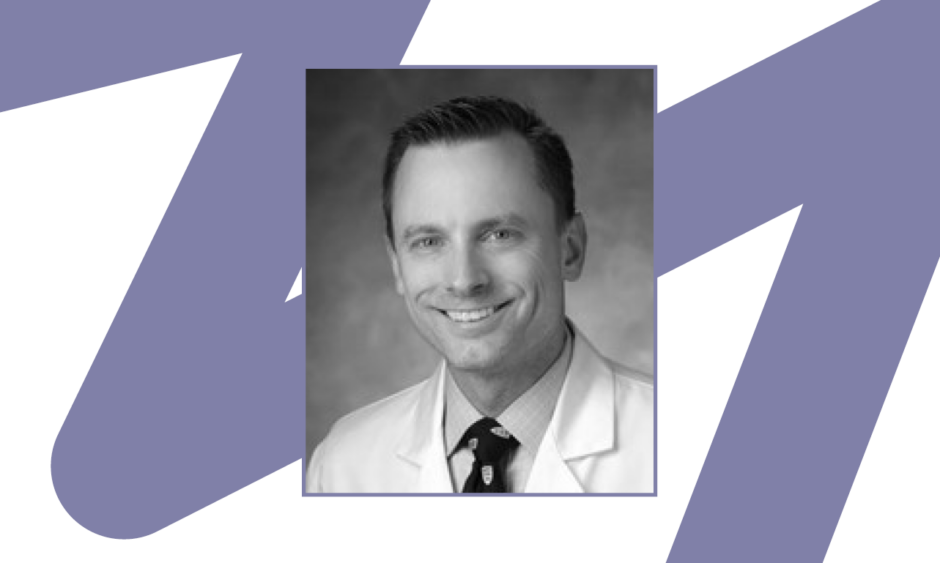John Sperati | Director, Nephrology Fellowship Training Program; Associate Professor of Medicine, Johns Hopkins University School of Medicine, Baltimore, Maryland, USA
![]()
With over 15 years of experience working as a nephrologist, what initially led you to pursue a career in renal medicine?
A well-timed mentorship can be so influential in our career choices. The teaching and humanity I witnessed from nephrologists during medical school and residency resonated with me in a way that no other group of physicians could achieve. My grandmother was also on dialysis, so I had a meaningful family connection to the field. At its core, nephrology as a specialty offers so much more than just the delivery of dialysis for patients with end-stage kidney disease (ESKD). As a field, we became somewhat side-tracked from the science by the ESKD juggernaut, but that is changing for the better. Plus, who wouldn’t be hooked by Dr McCoy curing ESKD with a pill in Star Trek IV!?
You recently published a review entitled ‘Improving Primary Care Delivery for Patients Receiving Maintenance Hemodialysis’. What was the key takeaway message of this paper?
The healthcare system, in the USA in particular, is fragmented. Many patients on haemodialysis have a survival rate lower than patients with metastatic cancer. Patients interface with the healthcare system three times a week at dialysis, yet the current system is not structured to facilitate meaningful care beyond the delivery of dialysis. There is a world of opportunity here to improve patients’ lives and hopefully save resources, and we need significant change in our care delivery models to do that.
You are currently the Director of the Johns Hopkins University School of Medicine (JHUSOM) Nephrology Fellowship Training Program, Baltimore, Maryland, USA. Could you tell us a bit about what this role entails and the changes that you have brought into effect since your appointment?
As the Fellowship Director, I administer and develop the training programme for our 12–14 fellows (12 clinical fellows plus one or two in dedicated research years). This entails significant administrative work around accreditation, but the joy comes from curriculum design, didactic and bedside teaching, mentoring, and hopefully inspiring the next generation of nephrologists. Since taking the role in 2019, we have brought all curricular resources online with instant access through an app; implemented a formal Clinician Educator training pathway; launched collaborations for additional training in bioinnovation and design, global health, and critical care in nephrology; installed advanced urine microscopy equipment; and instituted a formal mentoring/advising programme. In that short time, we have had three fellows named on committees for the American Society of Nephrology (ASN), one to the National Kidney Foundation (NKF) Spring Clinical Meeting planning committee, and several to other national or international training experiences
You have a key interest in thrombotic microangiopathies involving the complement system. Could you tell us about the stage that this research is currently in?
As a college and medical student, I worked in the laboratory of Greg Stahl at Brigham & Women’s Hospital, Boston, Massachusetts, USA, studying the role of complement in ischaemia reperfusion injury. This was long before the clinical introduction of complement therapeutics and the complement system was undertaught in medical schools.
With the introduction of complement therapeutics, I was able to bring together my interest in complement with genetics and kidney disease. I established an institutional Complement Associated Disease Registry, with a primary focus on thrombotic microangiopathies. In collaboration with my haematology colleagues at JHUSOM, as well as investigators at other institutions, we have been able to utilise the registry data to develop an ex vivo assay of terminal complement activation, as well as help define the relapse rate of atypical haemolytic uremic syndrome upon discontinuation of anti-C5 therapy. I am primarily a clinician and an educator, so I am able to leverage those talents by serving as the bridge between the clinic and the laboratory.
Over the years as a nephrologist, how have you seen the field change in terms of advancements in technology?
Without question, KidneyX (a collaboration between the US Department of Health and Human Services [HHS] and ASN) has been one of the most exciting developments in nephrology in the past 20 years. For the first time, we are seeing more significant investment in new technology development and one can reasonably hope a wearable artificial kidney may actually be on the horizon. In a very short time, machine learning algorithms and single cell RNA sequencing are showing how we can transform our understanding of physiology, drug development, diagnosis, and renal pathology analysis. At JHUSOM, we have been fortunate to collaborate these past 3 years with the Center for Bioengineering Innovation and Design in the School of Engineering (CBID [Johns Hopkins University Whiting School of Engineering, Baltimore, Maryland, USA). We have mentored yearly teams of bioengineering graduate students to identify and prototype novel device solutions for unmet needs within nephrology. It is difficult but promising work.
How has COVID-19 impacted renal medicine?
Sadly, it has been devastating to our patients on dialysis. It required significant advocacy for public health and hospital system officials to recognise and help address the unique risks this pandemic has posed to our patients. The pandemic has opened new lines of research into acute kidney injury, and it has required health systems to become nimbler and more creative in addressing resource allocation. The nephrology community had to learn quickly how to collaborate and share large datasets across multiple institutions in near-record time. Those processes can now be leveraged to facilitate solving other pressing problems in the field outside of COVID-19. At JHUSOM, among other impacts, the need for virtual conferencing was a nice motivation for us to reconnect with many of our former graduates. We now have alumni participating in didactic conferences and it feels right to rekindle connections that should not have so easily drifted apart over the years. Supporting this network will contribute to the success of our trainees, create opportunities, and facilitate new collaboration.
How have you personally adapted your patient care during the pandemic?
I now have a healthy proportion of telemedicine appointments. As an aside, I have also decided to reinvigorate my attention to physical diagnosis for those in-person visits. For appointments that are appropriate for telemedicine, we can address the healthcare needs much more quickly. Like many others, I have had to personally navigate the challenges of working and raising school-age children during the pandemic. I understand the importance of time, or lack thereof. Being at an academic centre, we have a significant proportion of patients from other parts of the country. Thus, telemedicine has allowed us to provide better care for more patients than was previously possible. Nevertheless, the pandemic has further blurred the lines between work and home. Similar to many professions, while the new workflows have nice benefits, we have to ensure it does not become all consuming.
As an educator, where can we expect to see your focus lie in the coming years?
The need to be fluent in clinical genetics is already here for nephrologists, although we are not teaching it well. I hope, as a programme, we can further develop the requisite knowledge in genetic disease, technologies, and interpretation needed for practice in the modern era. Additionally, while I am likely in the minority on this, I believe 2 years for nephrology training is too short. We are focusing on strategies to equip our fellows with the skills and learning frameworks necessary to continue their education on what needs to be a steep curve for several years post-graduation.








